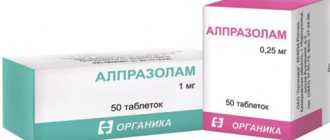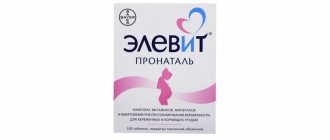Home | About us | Delivery | Advertisers | Login | Registration
Delivery on Sundays and holidays does not work!
- Medicines
- dietary supplementsVitamins
- Categories from A to Z
- Brands from A to Z
- Products from A to Z
- Medical equipment
- beauty
- Child
- Care
- Honey products appointments
- Herbs and herbal teas
- Medical nutrition
- Journey
- Making medicinesStock
Pharmacy online is the best pharmacy in Almaty, delivering medicines to Almaty. An online pharmacy or online pharmacy provides the following types of services: delivery of medicines, medicines to your home. Online pharmacy Almaty or online pharmacy Almaty delivers medicines to your home, as well as home delivery of medicines in Almaty.
my basket
Apteka84.kz is an online pharmacy that offers its customers medicines, medicinal and decorative cosmetics, dietary supplements, vitamins, baby food, intimate products for adults, medical equipment and thousands of other medical and cosmetic products at low prices. All data presented on the Apteka84.kz website is for informational purposes only and is not a substitute for professional medical care. Apteka84.kz strongly recommends that you carefully read the instructions for use contained in each package of medicines and other products. If you currently have any symptoms of the disease, you should seek help from a doctor. You should always tell your doctor or pharmacist about all the medicines you take. If you feel you need further help, please consult your local pharmacist or contact our GP online or by telephone.
© 2021 Pharmacy 84.
The effectiveness of the drug Dazolic (ornidazole) in the treatment of bacterial vaginosis
Bacterial vaginosis is one of the most common vulvovaginal infections, especially among women of reproductive age. Numerous studies have established that the vaginal ecosystem is very complex, multicomponent, hormone-dependent and easily vulnerable. Many factors in the life of a modern woman can upset this balance: the use of antibiotics, contraceptives, casual sex, and more.
Table 1. Duration of the disease
Table 2. Frequency of detection of typical laboratory signs of bacterial vaginosis
Assessing the significance of this problem in women's health, in the 80s of the last century, which is relatively recent, bacterial vaginosis was identified as an independent nosological form, which is defined as an infectious non-inflammatory syndrome associated with vaginal dysbiosis, and is characterized by massive proliferation of strictly anaerobic gram-negative bacteria. The frequency of this type of biocenosis disturbance increases from year to year. In the 90s of the last century, it was diagnosed in 19-33.0% of women, at the beginning of the 21st century it was detected in 38-44.6% of women, and in 2005 - in almost 70% of “conditionally healthy” women. Bacterial vaginosis is a polymicrobial vaginal syndrome, the most common pathogens of which are obligate anaerobic bacteria of the genus Prevotella (Bacteroides), Fusobacterium, Peptostreptococcus, Mobiluncus
, as well as microaerophiles -
Gardnerella vaginalis
and
Mycoplasma hominis
. Considering the multicomponent etiological factor of the disease, the objective of our study was to prove that the drug Dazolic (ornidazole) is optimal for the treatment of bacterial vaginosis. It is known that ornidazole does not have resistance to pathogenic and opportunistic microflora; in addition, it does not inhibit lactobacilli. Also, the advantages in choosing the drug Dazolic (ornidazole) should be considered optimal compliance: tolerability of ornidazole with alcohol (does not inhibit aldehyde dehydrogenase). In addition, since ornidazole does not produce active metabolites, fewer cases of intoxication (nausea, metallic taste in the mouth) were observed when taking it.
Purpose of clinical trials
– to evaluate the clinical effectiveness and tolerability of oral administration of the drug Dazolic in the treatment of bacterial vaginosis in women of reproductive age.
Inclusion criteria.
Patients 18-45 years old with bacterial vaginosis, the diagnosis should be confirmed by clinical and laboratory signs proposed by Amsel R et al. In (1983).
Exclusion criteria
:
- age under 18 and over 45 years;
- ascending process of genital pathology, somatic burden, including endocrine pathology, obesity, heart failure, serious liver or kidney pathology;
- asocial status of the patient, which makes clinical and serological control impossible;
- systemic and/or local therapy within 1 month before this study;
- women during pregnancy and breastfeeding;
- patients with STIs (syphilis, gonorrhea, etc.);
- patients with a history of ornidazole intolerance.
Performance evaluation criteria:
dynamics of complaints and clinical manifestations;
laboratory effectiveness:
normalization of smears for microflora and lack of growth of anaerobic microflora in bacteriological culture.
Good effect:
- complete regression of clinical symptoms;
- complete elimination of the pathogen.
Satisfactory effect:
- complete regression of clinical symptoms;
- detection of pathogenic microorganisms by one of the methods after completion of therapy.
Bad effect:
- no regression of clinical symptoms;
- clinical relapse;
- detection of pathogenic microorganisms after completion of therapy.
Criteria for assessing adverse reactions (tolerability) from the treatment:
- I (mild) degree – the presence of adverse reactions that do not affect the patient’s daily activity;
- II (moderate) degree - the presence of side effects that cause discomfort with some impact on daily activity;
- III (severe) degree - the presence of side effects leading to loss of performance and the inability to perform normal daily activities.
Research methods
In all patients, the microflora of the genitourinary organs was examined with determination of the number and types of microorganisms and a general smear before and 7-10 days after treatment.
General clinical examinations were carried out in all patients and included a general blood test and a general urinalysis.
The study was conducted on the basis of the Federal State Institution “UrNIIDVII Rosmedtekhnologii”. The study included 26 women aged 22 to 45 years (mean age 29.5 ± 2.7) diagnosed with bacterial vaginosis. Complaints of copious creamy discharge with an unpleasant odor, which intensified before menstruation, were made by 19 patients, itching of the external genitalia was noted by 3 women, and discomfort in the urethra was noted by 2 patients.
The duration of the disease in most patients was less than four weeks. And only one patient had symptoms that persisted for more than 6 months before going to a specialized institution.
During an objective examination, vulvar hyperemia was detected in only one patient; heavy or moderate vaginal discharge, which was located in the posterior fornix and/or evenly distributed along the vaginal walls, was detected in all patients. In 19 women (86.3%) with a disease duration of less than one month, they had a liquid consistency of white or grayish tint. In three patients (13.6%), the discharge in the posterior vaginal fornix had a thick consistency, gray color and had the property of stretching. All women had no signs of inflammation in the mucous membrane of the vagina and cervix. The distribution of typical laboratory signs of bacterial vaginosis in patients is presented in Table 2.
In the majority of the examined patients, the pH of the vaginal discharge shifted to the alkaline side. An unpleasant “fishy” smell of discharge, which intensifies when mixed with a 10% KOH solution, was detected in all but two patients. The presence of “key cells” in vaginal smears was also detected in the majority of patients (92.3%). The number of leukocytes varied from 8 to 40 per field of view, but in the majority of patients (73.1%) did not exceed 15. In all patients (26 people), the causative agent of bacterial vaginosis was Gardnerella vaginalis
, against which 5-NIMZ is active and ornidazole is also active.
Microscopy of the vaginal smear did not reveal known pathogenic pathogens - Trichomonas vaginalis, Neisseria gonorrhoeae, Candida albicans
, therefore all patients under our supervision received monotherapy with Dazolic 500 mg twice a day for five days
per os .
All 26 women completed the study. During the therapy, normalization of the clinical picture and laboratory parameters was achieved in the majority of patients. Clinical symptoms disappeared on days 3-4 of treatment in 23 patients, 1 patient still had complaints of discomfort in the urethra, and two patients had complaints of discharge.
When monitoring the cure 7-10 days after the end of therapy with Dazolic, all 26 patients noted an improvement in their condition; complaints of discharge persisted in only one patient. In smears for microflora in 3 women, single “key cells” were found; during bacteriological examination, an increase in G . vaginalis
a titer of less than 103 CFU/ml was also detected in 2 patients. In addition, in 12 patients (46.2%) an insufficient amount or absence of lactoflora remained. In all patients receiving therapy with Dazolic, the pH of the vaginal discharge shifted to the acidic side. The amino test was also negative in all those examined.
In the clinical study conducted, the drug Dazolic was well tolerated: no side effects or complications were noted in any patient.
Thus, studies conducted at the Federal State Institution UrNIIDVII Rosmedtekhnologii have shown that Dazolic is highly effective in the treatment of women with bacterial vaginosis and is well tolerated by patients.
Dazolic 500 mg tablet p/o No. 10
Dosage
500 mg
Active substance
Ornidazole
Manufacturer
Sun Pharmaceutical Industries Ltd (India)
Shelf life
5 years
Storage conditions
At room temperature
Registration certificate number
P N015785/01 dated 03/15/2017
Description of the dosage form
Round, biconvex, film-coated tablets, white or almost white, scored on one side.
Pharmacokinetics
Absorption from the gastrointestinal tract is high. Bioavailability - 90%. Time to reach maximum concentration (Tmax) is 1–2 hours. Plasma protein binding is at least 15%. Penetrates through the BBB. T1/2 - about 13 hours. Excreted in the form of metabolites by the kidneys (60–70%) and with feces (20–25%), about 5% of the dose is excreted unchanged.
Pharmacodynamics
Ornidazole is active against Trichomonas, Giardia, dysenteric amoeba, and some anaerobic microorganisms (bacteroides, fusobacteria, some strains of clostridia, anaerobic cocci).
Contraindications
hypersensitivity;
pregnancy (first trimester);
lactation period;
organic diseases of the central nervous system.
Directions for use and doses
Inside.
For trichomoniasis: adults - 0.5 g 2 times a day for 5 days. Children - in a single dose, at the rate of 25 mg/kg.
For amoebic dysentery: adults and children with body weight over 35 kg - 1.5 g once a day, with body weight over 60 kg - 2 g / day. Children weighing less than 35 kg - 40 mg/kg/day. Course - 3 days.
For the treatment of other forms of amebiasis: adults and children over 12 years of age - 0.5 g orally, morning and evening for 5-10 days. Single doses for children: aged 7–12 years - 0.375 g; 1–6 years – 0.25 g; up to 1 year - 0.125 g; frequency of administration - 2 times a day (morning and evening); Duration of treatment is 5–10 days.
For giardiasis: adults and children weighing over 35 kg orally, 1.5 g 1 time per day; children weighing up to 35 kg - 40 mg/kg/day. Duration of treatment is 1–2 days.
Prevention of infections caused by anaerobic bacteria, 0.5-1 g before surgery, after surgery - 0.5 g 2 times a day for 3-5 days.
Side effects
Headache, dizziness, impaired consciousness, tremor, rigidity, incoordination, convulsions, sensory or mixed peripheral neuropathy, nausea, vomiting, diarrhea.
Interaction
Enhances the effect of coumarin anticoagulants and prolongs the muscle relaxant effect of vecuronium bromide. Compatible with alcohol (does not inhibit acetaldehyde dehydrogenase).
Overdose
Symptoms:
epileptiform seizures, depression, peripheral neuritis.
Treatment:
symptomatic (diazepam for seizures).
special instructions
For trichomoniasis, both partners should be treated simultaneously.
Pharmgroups
Other synthetic antibacterial agents
Pharmaceutical actions
antiprotozoal





